bergenias?. And other shady possibilities which are not hostas
rosaprimula
last year
last modified: last year
Featured Answer
Comments (53)
peren.all Zone 5a Ontario Canada
last yearrosaprimula
last yearRelated Discussions
Hostas & other perennials for a shady yard
Comments (15)Sounds absolutely disgusting, Steve. Thanks for the heads-up about this nasty little insect, though. If my Asiatics start getting attacked, these'll be the first things I look for. Hope they don't make it this far west, but you never know, eh? Don B. P.S. As Beverly mentioned though, Asiatic lilies do grow quite nicely in part sun/bright shade. I was pleasantly surprised to find they will grow and blossom well right alongside hostas. Sorry the pic is a bit washed-out....See MoreWhich Hostas are good for beginners?
Comments (0)Almost all hostas are very easy for beginners to grow. There are many different color variations and sizes that are readily available at most local nurseries and on-line vendors. For someone just starting out, the recommendation is mostly medium sized hostas, with a few smaller varieties and maybe one medium large if you have a bit of extra room. Too many of the minis are a bit touchier to grow initially, harder to find, and more expensive. The really large ones simply get too big for most newcomers--very few people realize how truly massive a Sum & Substance will be at maturity until they have seem one, and they are very unlikely to have the garden space to accomodate a plant that large until they have grown hostas for a few years and really caught the "fever". The average new hosta person has a shady border area between 2 to 3 feet wide, and needs to plan accordingly. As they get more involved they can dig up vast areas of their lawn and put that space to better use by filling it with hostas. For specific plants the recommendation is the following based on reliable growth, easy of care (or tolerance of neglect), low initial cost, and wide availability. Golden Tiara, (or any of the other Tiaras), Gold Edger, Gold Drop, Pacific Blue Edger, Halcyon, fortunei Albo Picto, fortunei Aureo Marginata (often labeled simply as Gold Edge hosta), Golden Sceptor, Antioch, Moerheim, Green Gold, Honeybells, Royal Standard, Lancifolia, Minuteman, Patriot, Plantaginea, Krossa Regal, Sieboldiana Elegans, Shade Fanfare, Gold Standard, Crowned Imperial (the reverse of Gold Standard and a terrific plant), So Sweet, Undulatas of all types, Wide Brim, Striptease, Fried Bananas, Guacamole, Revolution, Ground Master, Allen P. McConnell, Abby, Ventricosa in all it's varieties, Candy Hearts, and August Moon. All these are widely available, and any 5 or 10 selected from the list will make a fine collection. Simply pick the ones that appeal to you. For those who find themselves immediately smitten with hostas, several additional recommendations follow. These are all fairly easy to find, slightly more expensive but still not outrageous, and all grow very well in a wide range of conditions. Some of them are also quite large or are minis, but all will grow well without special care. Tambourine, Polar Moon, Blue Angel, Blue Arrow, Blue Umbrella, Christmas Tree, Green Piecrust, Grey Piecrust, Fair Maiden, Little Aurora, Fragrant Bouquet, Fragrant Blue, Fragrant Gold, Geisha, Gold Regal, Regal Splendor, Sagae, Grand Master, Green Fountain, Inniswood, June, Stiletto, Invincible, Lemon Lime, Love Pat, Mildred Seaver, Montana Aureomarginata, Night Before Christmas, Nigrescens, Paul's Glory, Pineapple Poll, Pearl Lake, Blue Cadet, Sea Lotus Leaf, Spilt Milk, Sugar & Cream, Sum & Substance, Venusta, Yellow River, and Wolverine. As you can see, the new hosta fancier can amass quite a large collection simply by getting reliable, easy to locate, moderately priced varieties. Once you have grown hostas for a few years, then you can decide whether or not you want to try some of the ones that take a bit more effort to grow well, or are new and therefore expensive and more difficult to find. (Contributed by dhaven on the Hosta Forum)...See MoreCan Hosta Push Other Hosta Out of the Way?
Comments (15)Jon - No crispy edges on either T-Rex or Blue Mammoth. At least not that I remember, AS the years have gone by and much to my amazement the near by trees keep sending out more and more leaves. A this time there are moments in the afternoon where there is nearly no sun. Frankielynniise - I had to confront the Management Company here finally because the first and very promising spike on Empress Wu suddenly VANISHED and what was left was a slight indentation as to where it had been. What I equated to someone slicing the spike BELOW the surface with a pocket knife. Ihad told them previous that I felt that the plant was suffering (at that time) presumably from a critter under the garden. The crttter became unconfirmed as the burrow that I thought I had seen last fall during the planting of Fire and Ice had 100% disappeared. Nature made a horrid fool out of me in front of BOTH the management company AND the exterminator. Previous to this post I was so agitated that I was nearly in a state of depression. Beverlymnz4 - I’ve taken note of your comments. Hard to respond at this point Babka NorCal 9b - I had not been aware that Crown Rot could still leave a vestiges of a survivable plant. I had been told previously that crown rot would take any living part of the plant after it took hold of the plant. Thank you for correcting my knowledge about Crown Rot. I do understand that different hosta come up at different times of the spring; I generally give my plants until June to spike; and that the ‘bumps are dormant buds. AT that time I replanted the buds to give them a chance to grow (they never did). As for plants sinking … .The ground seems to be pretty solid; so I would doubt that they would sink, although I suppose it is possible (thinks hard). I’ve planted hosta for years and now often check the crown line of the plant before putting it into the soil to insure that the line is slightly below the surface of the surrounding soil + not more than an inch. This season has been an horrid season form my smaller hosta [Church Mouse, Holy Mouse Ears, Frosted Mouse Ears, and Little Sunspot in particular] have all surfaced to raise the crown line to not more than 1/2 inch ABOVE the soil. At first I was concerned, but since then they have all spiked, leafed, and currently looking O.K. Never seen this in hosta before. Peter Kelley - St Paul, MN USA...See MoreHosta undulata var. erromena, possible mutation or patogen?
Comments (3)Brucebanyaihsta, where did you see similar changes on Erromena? Any more info or picture would be very helpful. As I said at the previous post, it is hard to believe in any viral infection. For six years any of pathogen would spread to other hostas and first of all destroy or weaken this one....See Moremxk3 z5b_MI
last yearrosaprimula
last yearlast modified: last yearmxk3 z5b_MI
last yearrosaprimula
last yearlast modified: last yeardbarron
last yearrosaprimula
last yearcecily 7A
last yearfloral_uk z.8/9 SW UK
last yeardbarron
last yearlast modified: last yearrosaprimula
last yearlast modified: last yeargardengal48 (PNW Z8/9)
last yearrosaprimula
last yeardbarron
last yearrosaprimula
last yearlast modified: last yearlat62
last yearrosaprimula
last yearmarmiegard_z7b
last yeardbarron
last yearmarmiegard_z7b
last yearSeniorBalloon
last yearrosaprimula
last yeargardengal48 (PNW Z8/9)
last yeardbarron
last yearlast modified: last yearlat62
last yearlast modified: last yeardbarron
last yearforever_a_newbie_VA8
last yearrosaprimula
last yearlast modified: last yearperen.all Zone 5a Ontario Canada
last yeardbarron
last yearmad_gallica (z5 Eastern NY)
last yearmxk3 z5b_MI
last yeargardengal48 (PNW Z8/9)
last yearperen.all Zone 5a Ontario Canada
last yearrosaprimula
last yearlast modified: last yearrosaprimula
last yearlat62
last yearSeniorBalloon
last yeargardengal48 (PNW Z8/9)
last yearrosaprimula
last yeargardengal48 (PNW Z8/9)
last yearSeniorBalloon
last yearlast modified: last yearrosaprimula
last yearlast modified: last yearfloral_uk z.8/9 SW UK
last yearrosaprimula
last yearlast modified: last year
Related Stories

LANDSCAPE DESIGNGarden Overhaul: Which Plants Should Stay, Which Should Go?
Learning how to inventory your plants is the first step in dealing with an overgrown landscape
Full Story
GARDENING GUIDESYes, You Can Grow Food in a Shady Yard
Your shady garden doesn’t have to be forever barren. Berries, herbs and other shade-loving plants can produce a delicious bounty
Full Story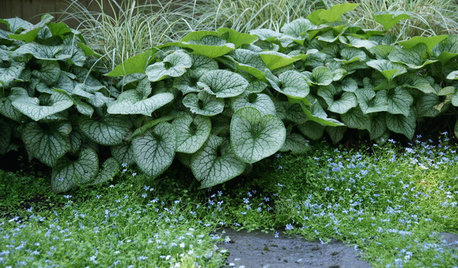
GARDENING GUIDESHosta Alternatives for the Shaded Garden
Discover which foliage plants to use instead of or in addition to hostas in the landscape
Full Story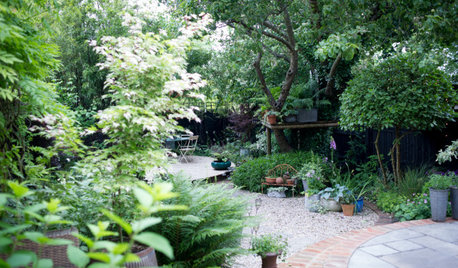
LANDSCAPE DESIGNYard of the Week: Plants and Salvaged Finds Beautify a Shady Spot
Recycled plants, pre-loved pots, antiques and a considered mix of textures and colors add character to a London backyard
Full Story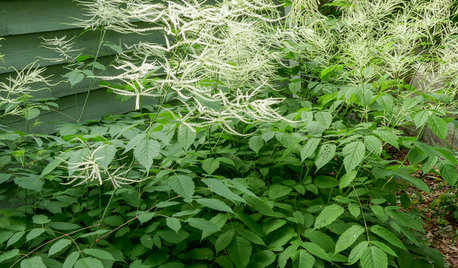
FLOWERS AND PLANTSAruncus Dioicus Is a Stately Plant for Shady, Moist Garden Spots
Plant goat’s beard in perennial and woodland gardens. Its large white spring blooms attract bees, beetles and butterflies
Full Story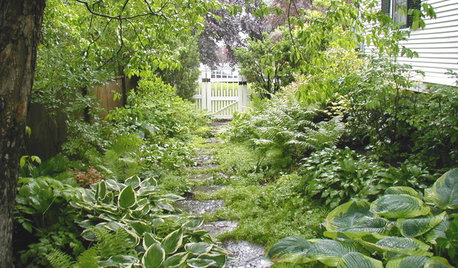
PLANTING IDEAS9 Beautiful Plant Combinations for Shady Side Yards
Turn a side yard into a calming retreat or a lovely area to pass through with these inspiring plant combinations
Full Story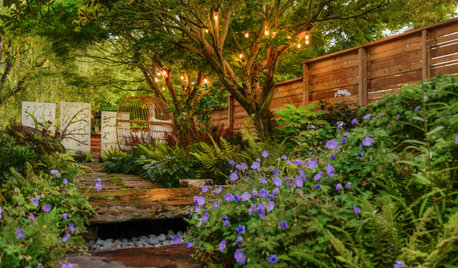
LANDSCAPE DESIGNYard of the Week: Underused Side Yard Now a Shady Retreat
Pollinator-attracting plants, custom art pieces and clever screening solutions turn a grassy yard into a leafy oasis
Full Story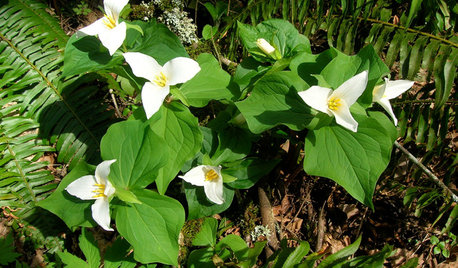
GARDENING GUIDES8 Native Flowers to Brighten Shady Garden Spots
These self-spreading plants from around the country will create a low-maintenance splash from spring to fall
Full Story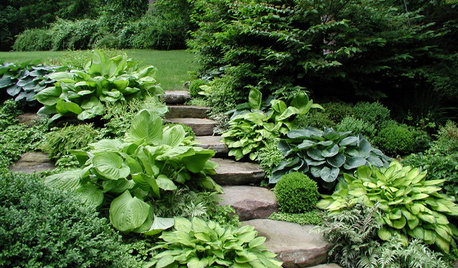
FLOWERS AND PLANTSShade-Loving Hostas Shine in the Garden
With thousands of hostas to choose from, you’re sure to find the perfect plant for your garden
Full Story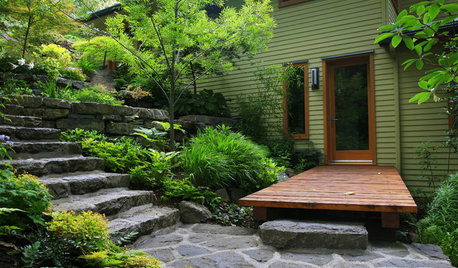
PLANTING IDEAS9 Beautiful Shady Yards Overflow With Lush Plantings
Find out how to mix foliage colors and textures to brighten dark areas and create dynamic shade plantings
Full Story




violetsnapdragon